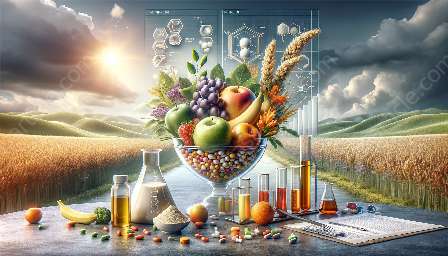Nutrient Transport and Storage: Unveiling the Intricacies of the Human Body
Nutrient transport and storage play vital roles in maintaining overall health and well-being. Understanding the mechanisms and processes involved in this intricate system is crucial in comprehending the complexities of nutritional metabolism and nutrition science.
The Significance of Nutrient Transport
Nutrient transport refers to the movement of essential nutrients, such as carbohydrates, proteins, fats, vitamins, and minerals, within the body. These nutrients are critical for sustaining life and performing various physiological functions, including energy production, tissue repair, and immune system support.
Role of Digestive System: The journey of nutrients begins in the digestive system, where food is broken down into its basic components through the process of digestion. Carbohydrates are converted into glucose, proteins into amino acids, and fats into fatty acids and glycerol. These smaller molecules are then absorbed into the bloodstream through the walls of the small intestine.
Transport in the Bloodstream: Once absorbed, nutrients are transported via the bloodstream to different tissues and organs. The circulatory system acts as a conduit for delivering nutrients to cells throughout the body, ensuring that each cell receives the necessary nourishment for its proper functioning.
The Intricacies of Nutrient Storage
While nutrient transport ensures the immediate delivery of essential molecules, nutrient storage serves as a reservoir for times of scarcity or increased demand. The body has specialized storage sites for various nutrients, allowing for the regulation of nutrient levels and sustained energy production.
Storage of Carbohydrates: Glucose, the primary form of carbohydrate, is stored in the liver and muscles in the form of glycogen. This glycogen serves as a readily available source of energy when blood glucose levels drop, such as during periods of fasting or intense physical activity.
Storage of Fats: Excess dietary fats are stored in adipose tissue, commonly known as body fat. Adipose tissue not only provides insulation and protection but also serves as a long-term energy reserve, especially during prolonged periods of food scarcity.
Storage of Vitamins and Minerals: Certain vitamins and minerals, such as vitamin A, vitamin D, and iron, are stored in the liver and other tissues. These reserves ensure that the body has a backup supply of these crucial micronutrients, particularly when dietary intake may be insufficient.
Interplay with Nutritional Metabolism
The processes of nutrient transport and storage are intricately linked to nutritional metabolism, which encompasses the chemical reactions and pathways involved in the utilization of nutrients for energy production, growth, and maintenance of body tissues.
Energy Metabolism: Nutrient transport supplies the raw materials for energy metabolism. Carbohydrates, fats, and proteins are metabolized to produce adenosine triphosphate (ATP), the universal energy currency of the body, which powers various cellular processes.
Macronutrient Balance: Efficient nutrient storage helps maintain a delicate balance of macronutrients in the body. This balance is essential for meeting energy demands, regulating metabolic processes, and avoiding the detrimental effects of nutrient excess or deficiency.
Metabolic Regulation: Nutrient storage sites are tightly regulated by hormonal signals and metabolic pathways. Hormones such as insulin, glucagon, and leptin govern the storage and release of nutrients based on the body's energy needs and overall metabolic state.
Insights from Nutrition Science
Nutrition science delves into the intricate details of nutrient transport and storage, seeking to unravel the factors influencing these processes and their impact on human health and disease.
Research Advances: Cutting-edge research in nutrition science explores the molecular mechanisms underlying nutrient transport and storage, shedding light on the interplay between genetics, diet, and metabolic regulation.
Public Health Implications: Understanding nutrient transport and storage has profound implications for public health. It provides insights into the development of dietary guidelines, nutritional interventions, and strategies for combating diet-related diseases.
Personalized Nutrition: The study of nutrient transport and storage paves the way for personalized nutrition approaches, considering an individual's unique metabolism, genetic predispositions, and nutrient handling capacities.
The Impact on Human Health
Optimal nutrient transport and storage are paramount for maintaining health and preventing nutrient-related disorders. Disruptions in these processes can lead to a range of health issues, from deficiencies to metabolic disorders.
Role in Chronic Diseases: Dysregulation of nutrient transport and storage is associated with the development of chronic diseases, including obesity, type 2 diabetes, cardiovascular diseases, and certain cancers.
Importance of Nutrient Balance: Achieving a harmonious balance in nutrient transport and storage is essential for promoting overall health and well-being. It involves not only the quantity but also the quality and timing of nutrient intake to support optimal metabolic function.
Overall, delving into the intricate world of nutrient transport and storage unveils the remarkable adaptability and resilience of the human body, while highlighting the critical role of these processes in nutritional metabolism and nutrition science.

